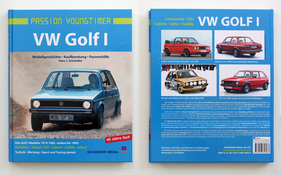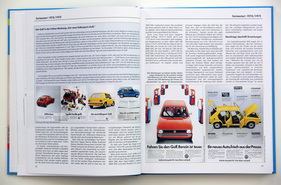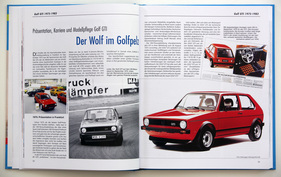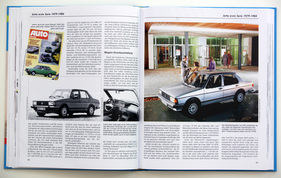The VW Golf turned forty years old in 2014. Although initially received skeptically by many, the Volkswagen has not only shaped entire generations, but has also become one of the most produced cars in history.
It all began with the VW Golf I designed by Giugiaro, which has now been fully documented in a truly monumental book "VW Golf I - Model History - Buyer's Guide - Breakdown Assistance" by Hans Jürgen Schneider.
From development to series production
Hans Jürgen Schneider was an editor at Auto Zeitung and, as an active car tester in the seventies and eighties, experienced the development of the Golf at first hand. You can feel this when reading the book. The fact that he also has an extensive archive of magazines at his disposal lends great credibility to this book, which has now been published to mark the 40th anniversary of the Golf.
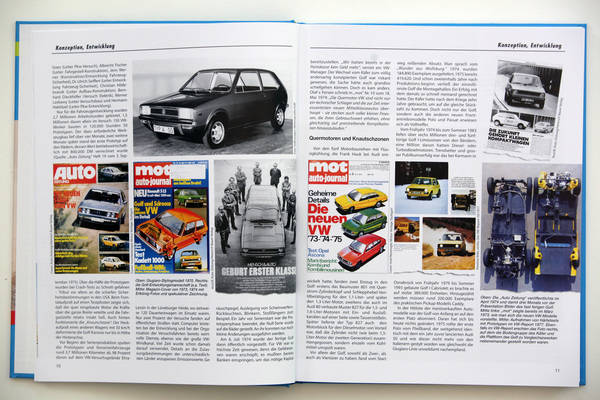
The work begins with the history of the Golf's development, which led from the failed EA 266 and EA 276 to the Giugiaro Golf (EA 337). The reader learns that the Golf was sometimes called the "Blizzard" and that the Italian designer had actually intended rectangular headlights.
The development history is followed by 40 pages of complete documentation of the production models that left the factory between 1974 and 1983.
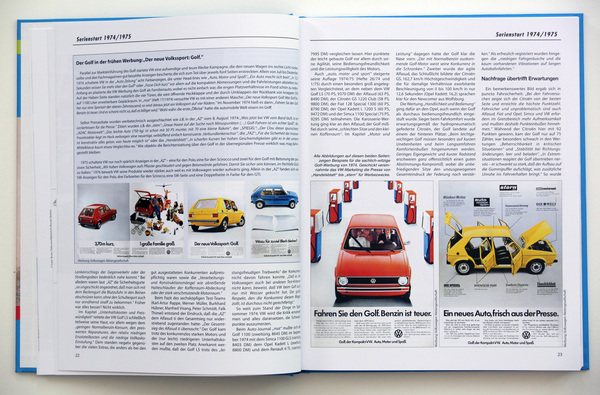
The special types
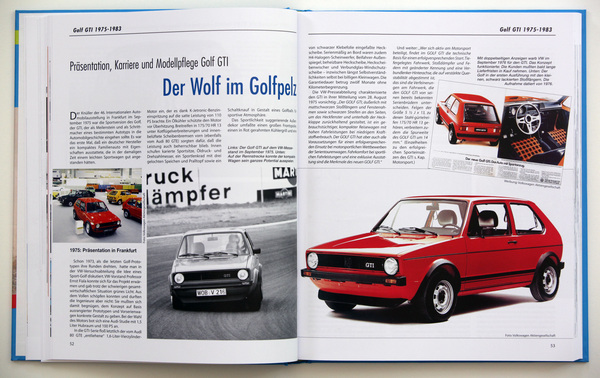
Of course, not only the standard models are featured in the book, but also the special variants, above all the Golf GTI, but also the Golf Diesel and its more powerful brother GTD in just as much detail.

Further chapters are also devoted to the Golf Cabrio and its staid cousin, the Jetta. Schneider has even reserved four pages for the Caddy in his 240-page book.
Schneider's comments on the Golf diesel record runs in the Auto Zeitung are interesting. It seems that some things were swept under the carpet back then ...
The combination of historical facts, reporting of the time and a look at the sales side makes these chapters in particular an entertaining read.
Tuning and motorsport
As a mass vehicle, the Golf attracted the interest of tuners like hardly any other car of the time. There was everything from a gullwing Golf to a Golf on the platform of the Porsche 928 to state cars. There seemed to be virtually no limit to the imagination of the tuners. They were most likely to be restricted by Volkswagen itself, which challenged the tuners with variants such as the GTI. Over ten pages, Schneider describes and illustrates the excesses of the tuner scene at the time.
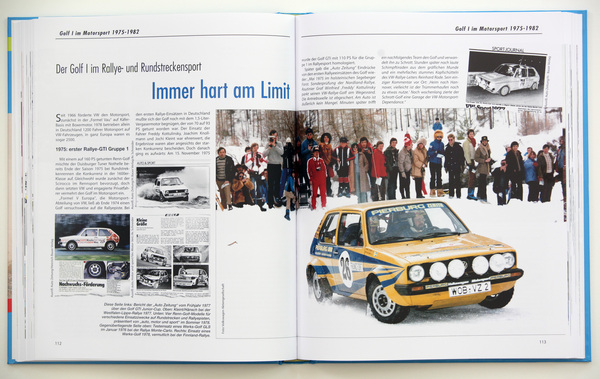
Volkswagen has been involved in motorsport since 1966, and logically the Golf was also given plenty of opportunity to demonstrate its talents in racing across all racing categories. There was the Golf GTI Junior Cup and rally racing, which led to victory in the 1979 Baltic Rally and fifth place overall in the 1980 Monte Carlo Rally. The Formula 3 Volkswagen engine of the 1980s was also based on Golf GTI technology.
The Golf from the owner's perspective
Schneider dissects the Golf on over 70 pages, documenting the bodywork, electrics, drive technology, fuel supply, braking system and much more for people who need to repair their Golf or have a breakdown with it.
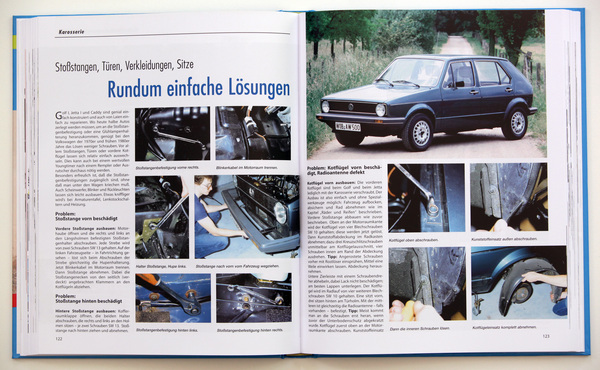
Valuable help is provided here, which can otherwise only be found in books specifically designed for this purpose. Based on specific problems (e.g. problem: window lifter, door lock or loudspeaker defective), the repair procedure is described in text and pictures.
Help with the purchase
Of course, a book of this kind should also include buying advice.
Schneider did not stop at studying the literature. In 2010, he bought an old Golf Formula E from 1981 and used it as a demonstration object in the book, documenting it in over 150 photos and using it to show the strengths and weaknesses of the design.
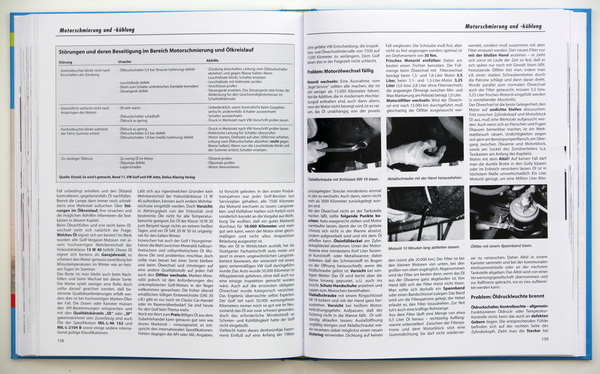
Data, addresses and colors
Of course, Schneider's book also includes an extensive collection of data. The most important types are described here in detail in figures. Even adjustment and test data are included. That a clear table of production figures, but perhaps we have overlooked it in the wealth of information. And since there is also no index, it is certainly advisable to leaf through the book from front to back for the first time after purchase to get an overview.
You will also learn that the Golf was available in Bahama Blue Met. in 1978 and Surinam Met. in 1982. In addition, you will find a whole series of interesting websites and the addresses of some specialists. In case you don't know what to do after reading the book.
For every Golf fan, but not just for them
The Golf is more than just a car, it is a monument to the seventies and eighties. As such, it is also of interest to people who are not planning to buy a Golf I next week or already own one.
The back part is certainly only relevant for hardcore enthusiasts, but the front chapters can be recommended to almost anyone interested in the cars of the recent past.
At Euro 24.90, the Golf book is inexpensive, just as the Golf I was an inexpensive car.
Bibliographical details
- Title: VW Golf I - Model history - Buying advice - Breakdown assistance
- Author. Hans Jürgen Schneider
- Format: Hardcover, 240 pages, over 600 illustrations color/black and white
- Publisher: Schneider Media UK LTD, Distribution Delius Klasing Verlag GmbH
- Edition: 1st edition 2014 (April 7, 2014)
- Language: German
- ISBN-10: 3768858081
- ISBN-13: 978-3768858083
- Size: 26.4 x 21.4 x 2 cm
- Price: Euro 24.90
- Buy/Order: online at amazon.de
, in well-assorted bookstores











